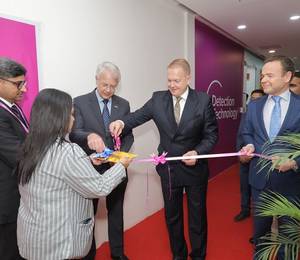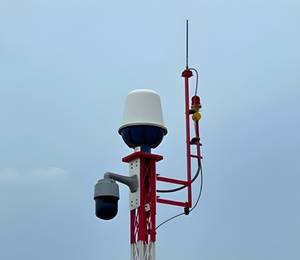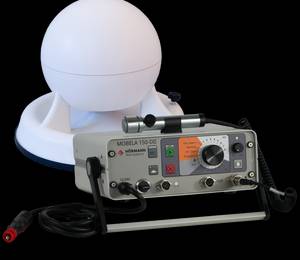Rather than a simple focus on deploying smart cities solutions, Huawei is pushing the concept of safer cities through technology and Internet of Things (IoT) applications, the Chinese networking giant has said.
Speaking during Huawei Asia-Pacific Innovation Day in Kuala Lumpur on Thursday, Huawei Enterprise global public safety expert Augustine Chiew described how Huawei has improved public safety in the Chinese district of Longgang, Shenzhen.
The Longgang District government and Huawei collaborated on developing a safe city solution framework focused on data collection, aggregation, convergence, and applications.
According to Chiew, Longgang has one of the leanest police forces in the world, with many of the city's officers being unarmed volunteers.
"To better detect, respond, and recover from crimes ... we basically went on a journey and started looking at various types of innovative technologies. The key principle was I want to connect all my resources and my assets, I want to use data as a source and foundation to get predictive intelligence," Chiew explained.
"It needs to improve response time; it needs to help me solve cases. More importantly, my officers need to be empowered so that they can have a more effective position on the ground ... as a district, we wanted to have the ability to do deep analysis [and] look at data."
During the course of the project, Huawei and Longgang have deployed 7,000 HD cameras across the district and connected 34,000 legacy cameras in shopping malls, parks, petrol stations, and communities.
The cameras make use of licence plate and facial recognition technology, with Chiew saying they capture around 14.6 million facial images every day, along with 140,000 number plate readings at petrol stations.
Around 7,457 Huawei smartphones have also been deployed to officers, allowing them to run specifically designed apps for identity checks, vehicle checks, accessing camera feeds, issuing summonses, and updating reports on the go.
The district has also saved on capital expenditure through data convergence.
"By using high-performance cloud servers, we have also achieved manpower optimisation, big data optimisation, and hardware optimisation," Chiew said.
As a result of the safe city project, theft and robbery decreased by 53.2 percent and case solvency grew by 45.1 percent year on year in the first half of 2017 in Longgang District.
One case saw a kidnapped toddler returned to her parents within 15 hours thanks to the use of video feeds, facial recognition, the aggregation of data from hotels and the national database including train ticket sales, and instantaneous collaboration between officers across different districts.
"That is the power of new IT technologies when applied correctly," Chiew said.
Also speaking during Huawei's Innovation Day, Deputy Malaysian Prime Minister Ahmad Zahid Hamidi said public safety is the "foundation" of digital transformation, and that it has to transform too; new tech like HD CCTV and a common hub for information should be "used wisely", he said.
The Brookings Institution used Huawei's APAC Innovation Day to publish its new global report ranking cities on their public safety innovation and use of technology for law enforcement, scoring cities across the globe on six categories: Digital vision, infrastructure, public safety effectiveness, public safety adoption, data analytics usage, and degree of engaging with the community.
Singapore came out on top, followed by Copenhagen, London, Amsterdam, Madrid, New York City, Paris, Washington DC, Riyadh, and Bangkok.
With 70 percent of people predicted to live in cities by 2050, Brookings Institution VP Darrell West said there is a need for smart city solutions across energy, transportation, housing, and economy -- but said it is going to be hard to make progress without more attention to public security.
New technology tools are needed to help cities cope with violence and criminal activity, he argued, including security cameras, security robots, vehicle recognition, video, sensors, facial recognition, and data analytics to pull all of this information together.
"Cities need to invest in their digital infrastructure, they need to overcome the funding challenges, they need to make progress in terms of implementing and integrating command centres, they need to boost the efficacy and transparency of their operations, involving citizens as a way to fight crime and building public support," West said.
He added that cities must also overcome "organisational resistance", make further use of body-worn cameras among law-enforcement agencies, utilise open data, deploy data analytics "to fight crime" -- and, lastly, find ways of balancing public safety with personal privacy.
Rotating CEO Guo Ping pointed towards the importance of narrowband IoT (NB-IoT), calling it "one of the most powerful new engines behind innovation" for individual businesses and for smart city applications.
"NB-IoT has a strong signal, huge range, and low-power consumption. Many SMEs are leveraging it to improve their existing services and to develop new ones," the CEO said.
"Companies are using narrowband IoT to connect street lamps, water meters, electric meters, all across the countries. The possibility for innovation and the new growth are endless."
According to Guo Ping, China's IoT adoption has seen 998 million cows connected in order to increase milk production, along with 1.2 billion connected cars, 1.8 million connected water meters, 3 million drones, 20 million connected shipping containers, and 300 million connected LED streetlamps.
China's worldwide leadership in technology is "a result of long-term heavy investment in infrastructure", Guo Ping said.
In addition to Longgang, Huawei has also been working on fitting out Weifang, China, with its NB-IoT smart city applications and OceanConnect IoT platform, in September announcing the launch of a demo smart city there.
Weifang is using Huawei's city-level IoT platform to access, manage, and collect data from sensory equipment spread across the city in real-time, including smart lighting applications that monitor the status of street lamps, automatically adjust brightness, and detect faults, with the system designed to save 80 percent of traditional electricity usage and 90 percent of previous maintenance costs.
Huawei said its goal is to develop the "nervous system" of smart cities, with the company having deployed its smart city solutions throughout 40 countries in over 100 cities across the world.
At the time, China's Longgang District government said it was working with Huawei on the government's own digital transformation to speed up approvals and other applications.
"The transformation also achieves integrated online and offline approval services, allowing Longgang citizens to submit applications or reports to the government through online business halls, mobile apps, WeChat, and other channels," Huawei said in September.











